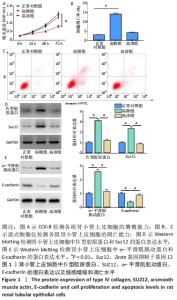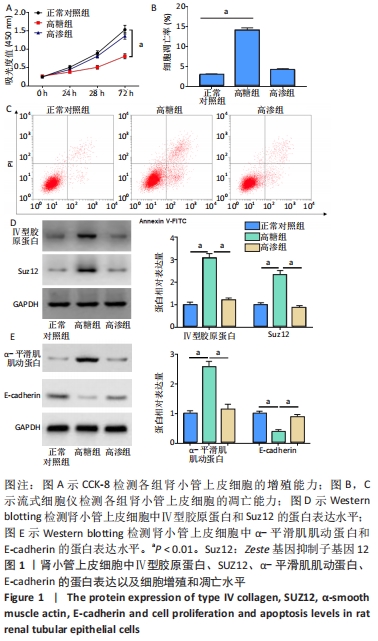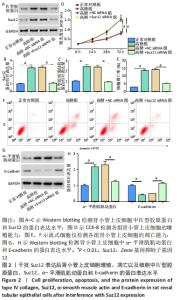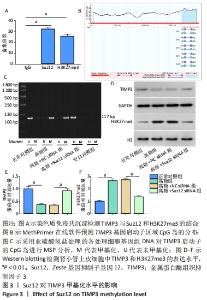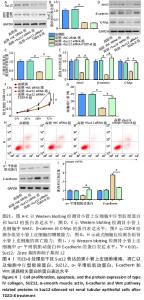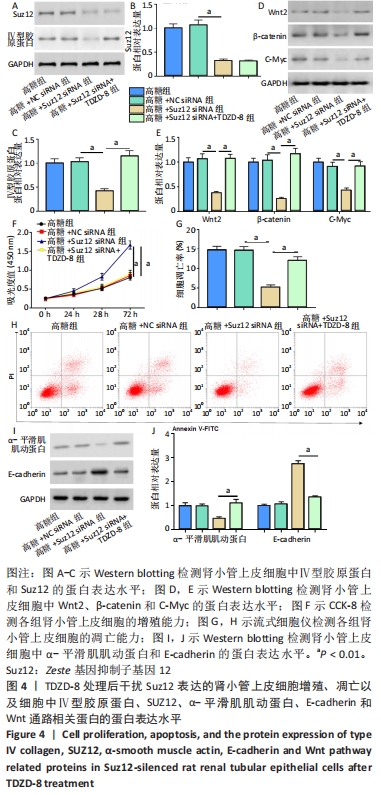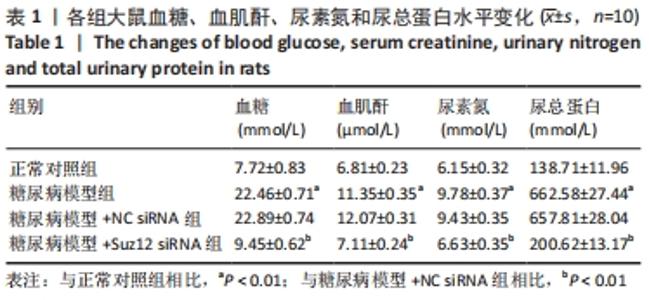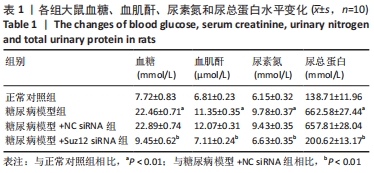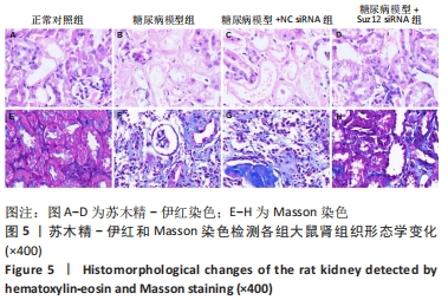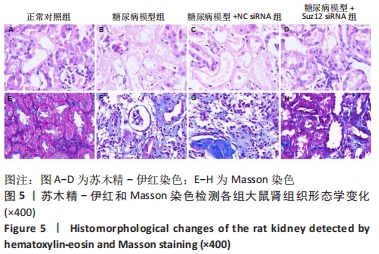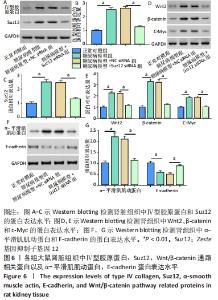[1] LU Y, LIU D, FENG Q, et al. Diabetic Nephropathy: Perspective on Extracellular Vesicles. Front Immunol. 2020;11(1):943.
[2] 张宝文, 雷香丽, 李瑾娜, 等. miR-21-5p靶向调控TIMP3抑制2型糖尿病肾病小鼠肾脏系膜细胞增殖及细胞外基质堆积[J]. 山东大学学报(医学版),2020,58(7):7-14.
[3] SHINOJIMA T, YU Q, HUANG SK, et al. Heterogeneous epigenetic regulation of TIMP3 in prostate cancer. Epigenetics. 2012;7(11):1279-1289.
[4] CYRUS S, BURKARDT D, WEAVER DD, et al. PRC2-complex related dysfunction in overgrowth syndromes: A review of EZH2, EED, and SUZ12 and their syndromic phenotypes. Am J Med Genet C Semin Med Genet. 2019;181(4):519-531.
[5] ZENG J, XIANG W, ZHANG Y, et al. Ubiquitous expressed transcript promotes tumorigenesis by acting as a positive modulator of the polycomb repressive complex 2 in clear cell renal cell carcinoma. BMC Cancer. 2019;19(1):874.
[6] METSUYANIM S, PODE-SHAKKED N, SCHMIDT-OTT KM, et al. Accumulation of malignant renal stem cells is associated with epigenetic changes in normal renal progenitor genes. Stem Cells. 2008; 26(7):1808-1817.
[7] XIAO L, WANG M, YANG S, et al. A glimpse of the pathogenetic mechanisms of Wnt/β-catenin signaling in diabetic nephropathy. Biomed Res Int. 2013;2013(1):987064.
[8] ZHANG RD, SHI M. Occurrence and development of diabetic nephropathy caused by CD63 by inhibiting Wnt-β-catenin signaling pathway. Eur Rev Med Pharmacol Sci. 2020;24(1):284-294.
[9] RAYEGO-MATEOS S, MORGADO-PASCUAL JL, OPAZO-RÍOS L, et al. Pathogenic Pathways and Therapeutic Approaches Targeting Inflammation in Diabetic Nephropathy. Int J Mol Sci. 2020;21(11):3798.
[10] WANG X, LIU J, ZHEN J, et al. Histone deacetylase 4 selectively contributes to podocyte injury in diabetic nephropathy. Kidney Int. 2014;86(4):712-725.
[11] RUAN Y, ZHANG Y, ZHAO J, et al. EZH2 promotes development and progression of diabetic nephropathy. Xi Bao Yu Fen Zi Mian Yi Xue Za Zhi. 2020;36(3):212-219.
[12] GUO Q, LI X, HAN H, et al. Histone Lysine Methylation in TGF-β1 Mediated p21 Gene Expression in Rat Mesangial Cells. Biomed Res Int. 2016;2016(1):6927234.
[13] HSU JH, RASMUSSON T, ROBINSON J, et al. EED-Targeted PROTACs Degrade EED, EZH2, and SUZ12 in the PRC2 Complex. Cell Chem Biol. 2020;27(1):41-46.e17.
[14] YANG Q, CHEN HY, WANG JN, et al. Alcohol promotes renal fibrosis by activating Nox2/4-mediated DNA methylation of Smad7. Clin Sci (Lond). 2020;134(2):103-122.
[15] QIAO S, LIU R, LV C, et al. Bergenin impedes the generation of extracellular matrix in glomerular mesangial cells and ameliorates diabetic nephropathy in mice by inhibiting oxidative stress via the mTOR/β-TrcP/Nrf2 pathway. Free Radic Biol Med. 2019;145(1):118-135.
[16] SØRENSEN J, SUBHI Y, MOLBECH CR, et al. Plasma Levels of Matrix Metalloprotease MMP-9 and Tissue Inhibitor TIMP-1 in Caucasian Patients with Polypoidal Choroidal Vasculopathy. Vision (Basel). 2020;4(2):27.
[17] LARONHA H, CARPINTEIRO I, PORTUGAL J, et al. Challenges in Matrix Metalloproteinases Inhibition. Biomolecules. 2020;10(5):717.
[18] WANG L, LI H. MiR-770-5p facilitates podocyte apoptosis and inflammation in diabetic nephropathy by targeting TIMP3. Biosci Rep. 2020;40(4):BSR20193653.
[19] KASSIRI Z, OUDIT GY, KANDALAM V, et al. Loss of TIMP3 enhances interstitial nephritis and fibrosis. J Am Soc Nephrol. 2009;20(6):1223-1235.
[20] XU C, HOU Z, ZHAN P, et al. EZH2 regulates cancer cell migration through repressing TIMP-3 in non-small cell lung cancer. Med Oncol. 2013;30(4):713.
[21] JIAO L, SHUBBAR M, YANG X, et al. A partially disordered region connects gene repression and activation functions of EZH2. Proc Natl Acad Sci U S A. 2020;117(29):16992-17002.
[22] WANG Y, ZHOU CJ, LIU Y. Wnt Signaling in Kidney Development and Disease. Prog Mol Biol Transl Sci. 2018;153(1):181-207.
[23] MIAO J, LIU J, NIU J, et al. Wnt/β-catenin/RAS signaling mediates age-related renal fibrosis and is associated with mitochondrial dysfunction. Aging Cell. 2019;18(5):e13004.
[24] HUFFSTATER T, MERRYMAN WD, GEWIN LS. Wnt/β-Catenin in Acute Kidney Injury and Progression to Chronic Kidney Disease. Semin Nephrol. 2020;40(2):126-137.
[25] DONG Q, JIE Y, MA J, et al. Wnt/β-catenin signaling pathway promotes renal ischemia-reperfusion injury through inducing oxidative stress and inflammation response. J Recept Signal Transduct Res. 2021;41(1):15-18.
[26] 张洋,黄学宽,沈清,等. 复肾功方对慢性肾衰竭大鼠Wnt/β-catenin信号途径的影响[J]. 中国实验方剂学杂志,2020,26(24):96-102.
[27] TUNG CW, HSU YC, SHIH YH, et al. Glomerular mesangial cell and podocyte injuries in diabetic nephropathy. Nephrology (Carlton). 2018; 23 Suppl 4(1):32-37.
|
